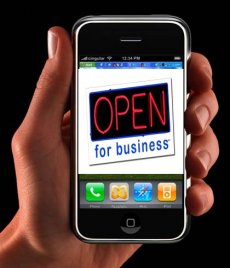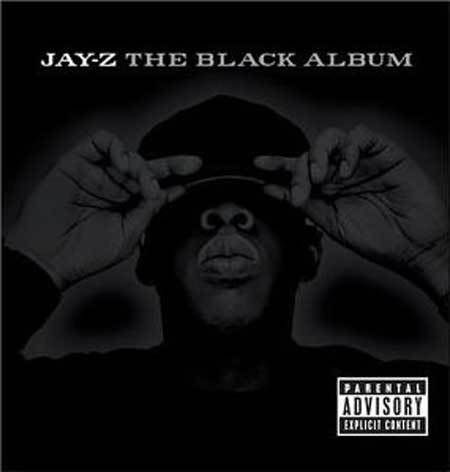What will it mean for us when the iPhone finally gets here, asks Garry Barker.
Hannibal Smith would have loved it: Apple's plan is coming together and the boys of Mission: Impossible who still do their derring do among the cobwebs of insomniacs' TV would see instantly how grand it is.
We had an example in Melbourne last week when, at a meeting of iMUG (the Internet Macintosh User Group), a call was made over the Telstra GSM network between two iPhones.
And then an iPod touch joined the dance and swapped emails with the iPhones.
They used Gmail through Safari, which is in both devices, and it worked beautifully. I was also able to receive my .Mac mail, but was not able to send through the Apple service.
Unfortunately, I cannot think of a word other than convergence to describe what is happening in the digital world.
As one of the iMUG experts observed: "Convergence is suddenly becoming real. The iPhone (with phone, wi-fi internet and iPod storage) is more convergent than anything else you can currently hold in your hand. It is marking a real milestone in digital development."
Both the iPod touch and the iPhone with their touch-screen controls proved that "software trumps hardware", he said.
"They have no keys and only a couple of buttons - on-off and home. The whole device is in software, making it totally configurable. You can do almost anything you want because of that," he said.
"The iPhone is at the vanguard of that development."
Keith Lang, of the plasq team that built Comic Life and Skitch (plasq.com), was one of the iPhone owners at the iMUG meeting and said "the iPhone not only has Mac OS X but it has all the developers behind it and they are dying to build stuff for it".
Having at first been skittish about hacker activity on the iPhone, Apple has now relaxed its restrictions and will distribute an iPhone software developers' kit early in February.
Apple chief executive Steve Jobs says he looks forward to hundreds of third-party applications being created for the devices.
In software terms, an iPod touch is essentially an iPhone without the phone. Thus iPhone applications, at least those not needing a phone network, should work on a touch.
iPhones are not expected to go officially on sale here until well into next year, but a steady stream of them is coming into Australia, many of which have been bought on eBay.
They are also available from dealers in HongKong, Manila, Bangkok and some with Australian online addresses, but probably Asian offices, for less than $A700. Officially, sellers will not modify the software, but most seem to know a young hacker who can help.
In their ex-factory form, iPhones are linked to single mobile phone networks in the countries in which they are sold - AT&T's Cingular in the US, T-Mobile in Germany and O2 in Britain.
But, because they, like the iPod touch, run a version of the Macintosh operating system rather than a phone-specific system such as Symbian, used by Nokia, Sony Ericsson and others, geeks have been able to "liberate" them to use the SIM cards of "foreign" networks.
An advantage of this is that you can enjoy an iPhone with its built-in iPod and wi-fi internet browsing features and still make local calls, thus happily avoiding cardiac arrest in your wallet when you call the bloke next door by way of international roaming on the "official" AT&T network in the US.
Professional developers are already active. Geoff Elwood, chief executive of Etech Group, the Australian educational software company, is an iPhone user. His Studywiz e-learning application, used in schools and universities in more than 20 countries, has communicated with iPods for many years. Now it runs on iPhone.
With 2008 not so far away, one might ask which telco is bidding for iPhone in Australia. Telstra is rumoured to have been conducting trials for some time and more fevered gossips suggest an iPhone announcement might put a nice dob of cream on something like a major Telstra store opening.
Against that is the fact that a 3G iPhone has not yet appeared, although Apple is known to be working on it. For Telstra to be really interested, one guesses, iPhone would have to have HSPA (high-speed packet access) technology and work on the Next G mobile broadband network.
MACFILE
If iPods had feelings - and who says they don't? - my black classic model would be smiling. So far, it's had one big advantage over the iPod touch - the voice-memo recording feature.
I use it as a voice recorder at least as much as I use it to listen to podcasts and music and so far no accessory microphones have been made for the touch.
The classic's microphones are not compatible with the touch that, like the iPhone, uses what you might call a "light" version of Mac OS X as its operating system.
When I plugged in the XtremeMac MicroMemo, a very good unit with a microphone on a flexible stalk and a switched line-in socket, the touch said: "Sorry, this device does not speak my language" - or words to that effect.
Similarly with the Belkin TuneTalk and the Griffin iTalk, both of which have rendered sterling service on my classic iPod and my little Product Red nano.
But classic will soon be smiling on the other side of its dial. XtremeMac has a touch microphone under development, as do Belkin and Griffin. Availability is expected before the end of the year.
Not that the shelves are bare of touch accessories. All manner of cases, armbands, screen covers and battery chargers almost beat the touch into the shops. Understandable: some people spend more on accessories than on buying the iPod.
__________________________________________________
Do You Yahoo!?
Tired of spam? Yahoo! Mail has the best spam protection around
http://mail.yahoo.com

 d the app, he gets full disk access and may install anything he would like. Be advised though, that such practices are anything but supported by Apple and a future firmware upgrade might pose a bricking problem.
d the app, he gets full disk access and may install anything he would like. Be advised though, that such practices are anything but supported by Apple and a future firmware upgrade might pose a bricking problem. 
 Those of you who've bit the bullet and sprung for an iPod Touch (or an iPhone) and are concerned about the screen issue that has come up (faulty rendering of blacks and all) but can't tell if your new toy is one of the defective ones, or if you're just worried about stuck or dead pixels like we all are, there is a free online test that you can use to detect any problems. (Would that there were more of these free and useful things around, huh?)
Those of you who've bit the bullet and sprung for an iPod Touch (or an iPhone) and are concerned about the screen issue that has come up (faulty rendering of blacks and all) but can't tell if your new toy is one of the defective ones, or if you're just worried about stuck or dead pixels like we all are, there is a free online test that you can use to detect any problems. (Would that there were more of these free and useful things around, huh?)


 iJailBreak, released today, is the first automated iPod Touch jailbreak app for Mac, but do you know what's really crazy about this app? It was written by a 13 year old!
iJailBreak, released today, is the first automated iPod Touch jailbreak app for Mac, but do you know what's really crazy about this app? It was written by a 13 year old!
